Parachute-Ski’s Michael Egger looks back on a long career
Michael Egger knows the sport of Parachute-Ski from all angles: a bird’s eye view as he jumps from a helicopter, inches from the snow as he flies around ski slalom poles, and - more sedately - from behind his desk as chair of the sport’s committee in the FAI Skydiving Commission.
His long and remarkable career spans decades, and his many friends within the world of Parachute-Ski will miss his cheerful and enthusiastic demeanour when he steps down as Parachute-Ski Committee Chair at the FAI Skydiving Commission (ISC) plenary meeting in Rome in February 2025.
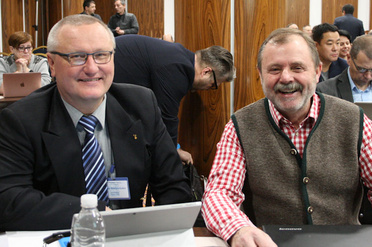
Gernot Rittenschober (R) and Michael Egger (L)
The sport of Parachute-Ski burst onto the international scene in the 1980s, with the first FAI World Para-Ski Championships took place in Sarajevo (Former Yugoslavia) in 1987. The 19th FAI World Championship competition is scheduled to take place in St. Johann, in Egger’s home nation of Austria in March 2025. (Header image shows Egger making an accuracy landing in St Johann).
Egger will leave the sport on a high, and he has big hopes that the next generation will buoy the sport forward into the future.
In this interview, Michael Egger shares his reflections on a lifetime in Parachute Ski:
How did you begin your journey in Parachute-Ski? Were you a skier first, or a skydiver?
In 1979 I moved from the Alps to the flat, eastern part of Austria to study in Wiener Neustadt - the cradle of air sports in Austria. Being far away from home and missing the mountains, I started parachuting. An old Cessna-172 flew me up to the (back then) usual jump altitudes and the airfield canteen became my living room. Perfect.
I was interested in all parachute disciplines. But to be honest, Formation Skydiving (in those days it was called Relative Work) was not so much fun out of a Cessna-172 or -182. So, I was bound to the disciplines of Style & Accuracy, and happily joined training sessions in Hungary with an Antonov-2 (AN-2) from time to time.
When I heard that a sport existed which combined skydiving accuracy with ski racing, called “Para-Ski” (today, we know it as Parachute-Ski), I was very excited. Having been a skier since childhood, I was keen to try it out - not knowing at that time that this sport would determine my whole life.
How many years did you compete for? And do you have a list of the medals you won?
My first Parachute-Ski competition was in a small village in Upper-Austria (Unterweißenbach) in 1981. The competitors were good parachutists, some were also good skiers. I thought to myself: “One day I will be the winner!”
I started training intensively in accuracy parachuting and ski racing.
From 1981 till 2016 I competed at 106 national and international Parachute-Ski competitions, winning a lot of medals... In total I participated in nine Parachute-Ski category-1 events as a competitor (five more as an Official) and I won three gold medals, plus one silver and a bronze.
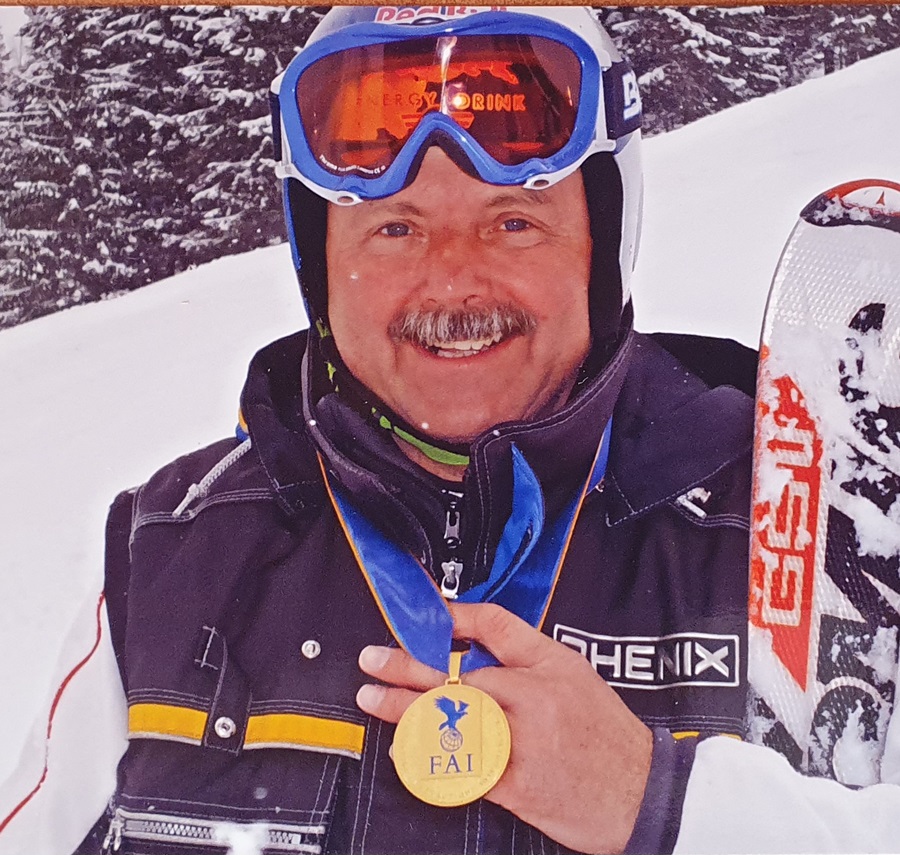
The equipment in both skiing and parachuting has changed dramatically since the early days of the sport, what do you think have been the biggest breakthroughs in equipment that have improved athletes’ performances?
The origins of Parachute-Ski are tied to mountain rescue operations in the Alps. When helicopters were not strong enough to climb up mountains in the 1960s, parachutists dropped their rescue-equipment and their skis to a safe place, higher than the scene of an accident or avalanche. After landing with their (round) parachutes, they skied down to the victims to rescue them.
From this mountain rescue background, three FAI pioneers from the Parachuting Commission (which has now become the FAI Skydiving Commission), namely E. Grätzer from Switzerland, H. Schlecht from Germany and W. Pflegerl from Austria, created Para-Ski in the early 1970s and developed it as a world class sport.
The development of the ram-air canopies to replace the round parachutes, and in skiing, the tilting poles and artificial snow, have improved athlete's performances significantly across parachuting and ski racing, and therefore Parachute Ski.
When I started as Chairperson of the "Sub-Committee Para-Ski" in 1998, the dead centre target for Parachuting Accuracy was 5 centimetres, and the maximum score 5 metres.
As the competitors got better and better, we lowered the diametre of the centre from 5 to 3cm, and the maximum score from 5 to 1 metre. Nowadays the target is 2cm in diametre, and the maximum score is 30cm per jump!
In skiing we stick to the current FIS Ski Competition Rules rules with few exceptions.
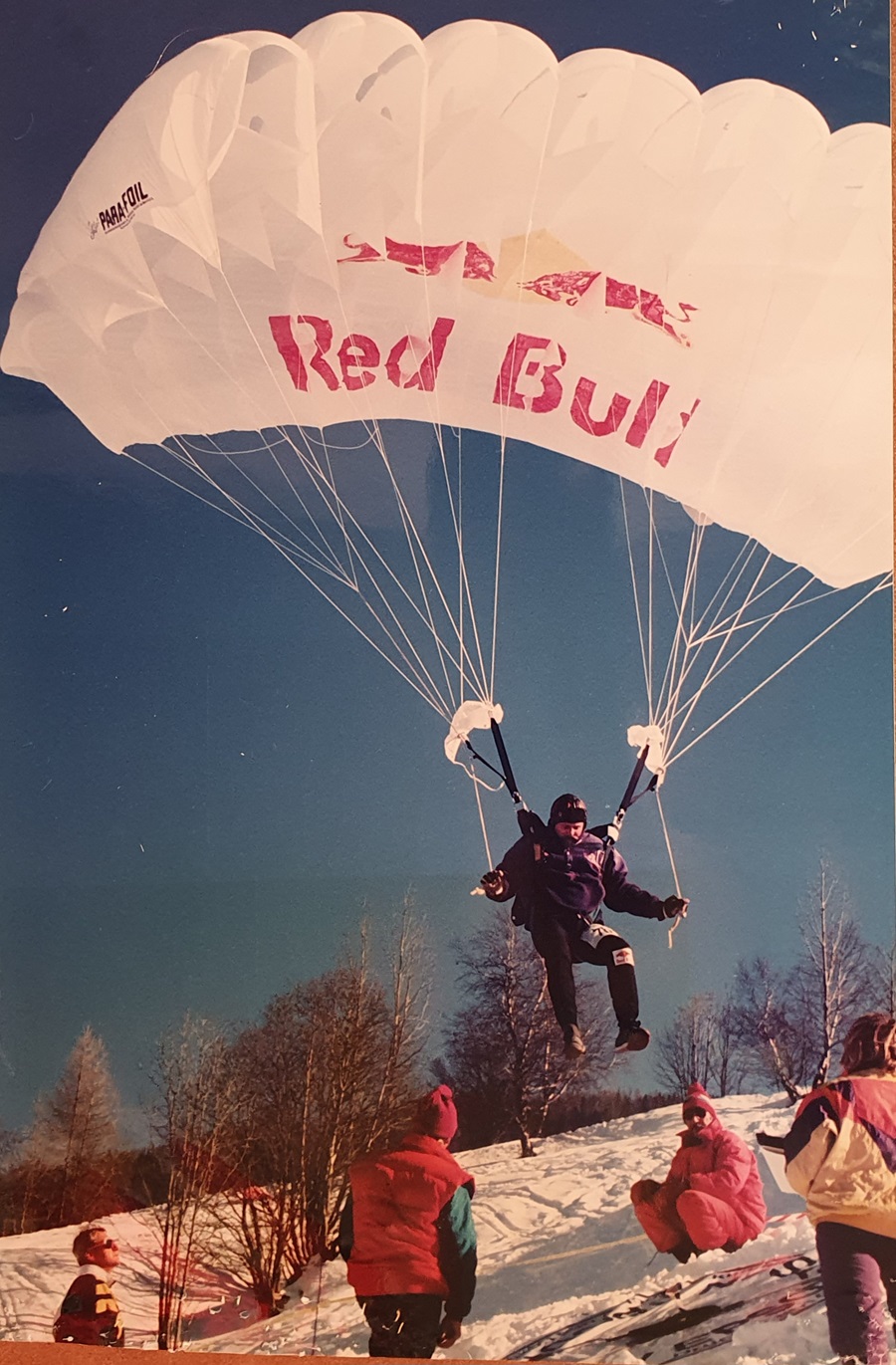
Egger makes an accuracy landing
You have made a remarkable contribution to the sport over the years, what will you miss the most about being the parachute-ski chairperson?
In 1998 I was approved as Chairperson of the IPC (today ISC) Para-Ski (today Parachute-Ski) Committee as replacement of Peter Mennel, who is now the General Secretary of the Austrian Olympic Committee. At that time the communication was by phone and facsimile (fax) - nowadays we have moved on!
The first Parachute-Ski World Championship took place in 1987 in Sarajevo (former Yugoslavia). After this the Parachute-Ski Committee was responsible for 18 World Meets and several other FCEs under my leadership.
The former " Parachute-Ski Europacup" we changed to the "Parachute-Ski World Cup Series" which are now Category-2 events. Maybe the Style and Accuracy Committee will follow our lead and organise the World Cup Series as a Category-2 event.
I was part of 24 ISC Plenary meetings (having only missed three!) where I contributed to the sport of the Parachute-Ski discipline, so this is something I shall miss. And of course, I will also miss all my friends in the Skydiving Commission. Parachute-Ski is a bit different to the other disciplines, but we always found a compromise to benefit the goals of both the ISC and Parachute-Ski.
I was also an active FAI Judge for Accuracy and Style frpm 1999 up to now, judging at several World Meets.
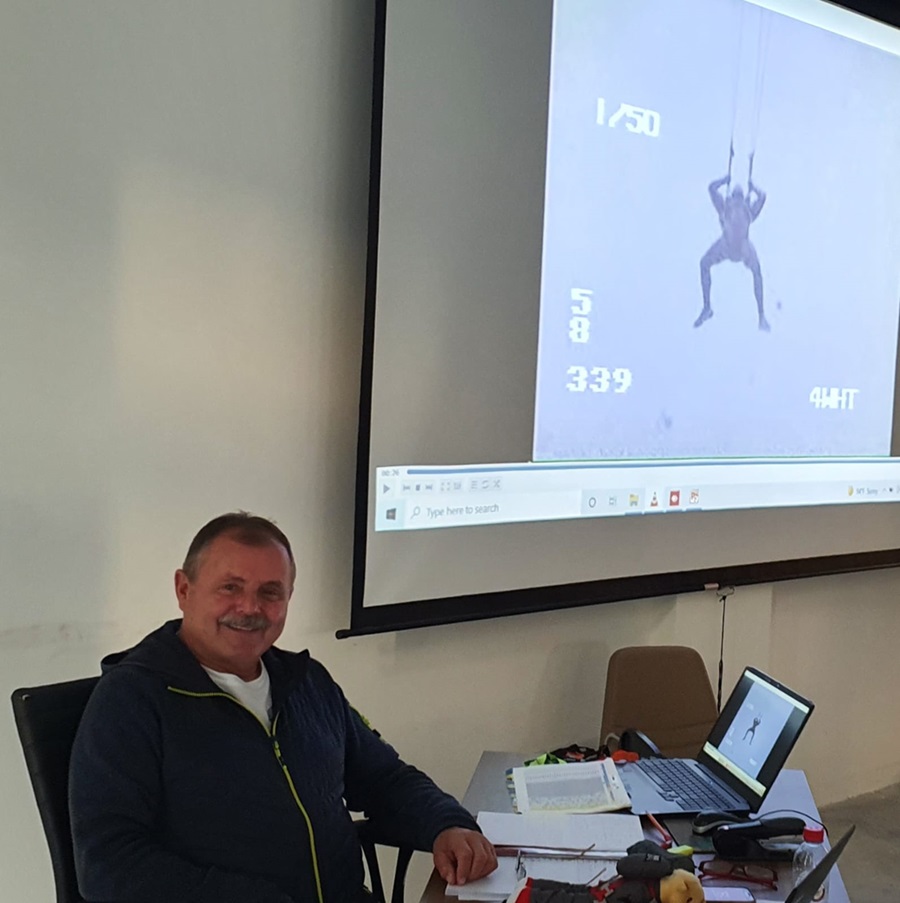
Egger at the Freefall Style Judges Seminar in Doha
What parachute-ski developments are you most proud of from your time with ISC?
I am really proud of all the members and advisors of the Committee who have worked with me over the last decades.
We have always been a small group and most of the members have been working for ISC for a very long period. Almost all members were present at world championship events, as either FAI officials or as competitors, so between us we had a thorough knowledge of what was going on and could work in favour of the "family of Parachute-Ski". (It was not me alone having ideas, I only presented the ideas of the Parachute-Ski Committee members to ISC and enforced them!) We also worked closely with the Skydiving Style & Accuracy Committee.
I am proud that Parachute-Ski introduced the important ‘wind rules’ (30 seconds re-jump offer and direction error) and also the ‘order of jumping rule’ (best team at the end). Both these rules were later adopted by the Style & Accuracy Committee and nowadays have become normal practise in Accuracy to make it fair for competitors and more interesting for the public.
We also stuck to our nearly perfect rules with only minor changes if needed and did not change rules just for the sake of changing.
We also have an up-to-date ISC ranking list online.
And the last change of the rules - adapting the factor for skiing for the combination ranking according to the increasing better performance of the competitors was an important step for the next years not to say decade.
And I am proud of the whole Parachute-Ski family - competitors, judges, officials and friends. We had great Meets, it was always a nice time, and competition was always in the spirit of friendship.
And one last thing I am proud of: we didn’t have a single protest in all these years!
I would like to express my thanks that I was allowed to be the father – and in the end, grandfather – of Parachute-Ski for such a long time!
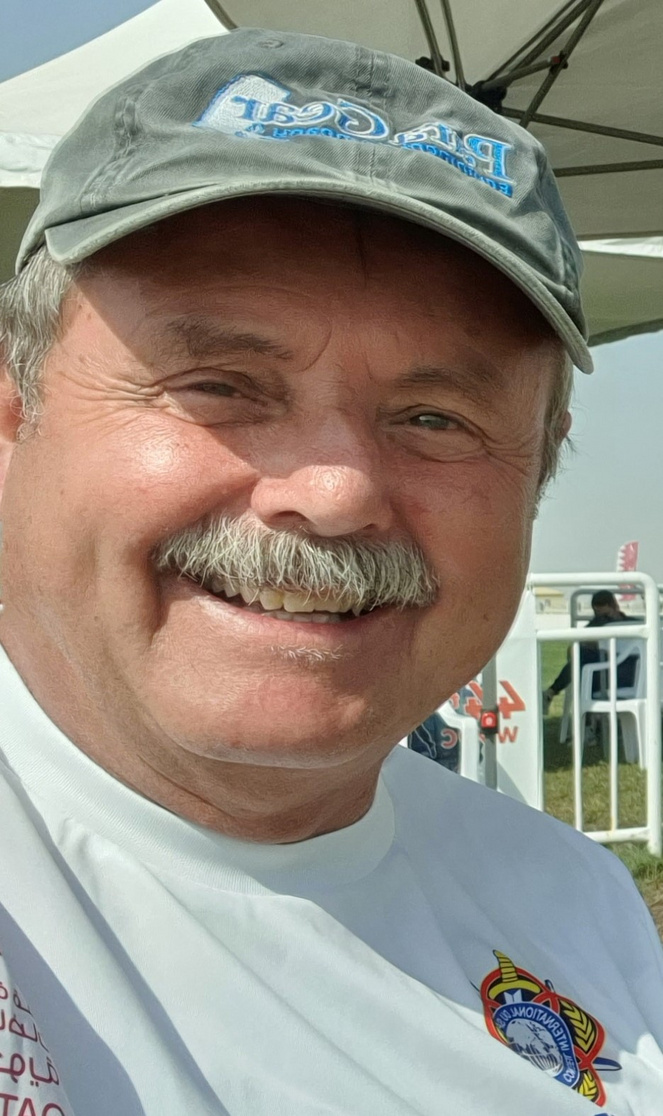
You will officially stand down from your position at the ISC Plenary in Rome next year, and Toni Gruber of Austria will be put forward as a nominated candidate and will hope to be approved as the next Chair of the Parachute-Ski Committee.
That's right. With Toni also being a multiple world champion I have a good replacement, and I am sure that he and his team will guide Parachute-Ski in the best direction. After 27 years it is time to hand over to the younger generation. They have good ideas!
How do you see the sport in 10 years’ time? Is there a possibility of more nations joining the international competitions?
I have a good feeling about the future.
I like to think that one of the best chances of ISC-sports to join the Olympics could be Parachute-Ski. That is because for the Olympic Winter Games there are fewer disciplines on the "waiting list", and also because Parachute-Ski is attractive, and we can perform anywhere. We have only a few officials and ski slopes are there anyway.
But that we share with all disciplines; skydiving is a minority sport after all!
At the 19th FAI World Parachute-Ski Championships in March 2025 in Sankt Johann, Austria, we are implementing a new strategy: we will run the whole Parachute-Ski competition (six jumps plus a final jump, and two giant slalom runs) in a shorter time.
We have also offered an extremely low entry fee by utilising local sponsors and encouraging national support. Maybe this will motivate more nations, and bigger skydiving nations, to return to the sport. Some countries have not been able to compete in recent years because of reduced budget.
There are ups and downs in all sports, but I think Parachute-Ski, with new ideas, is on the way up again.
FAI World Parachute-Ski Championship 2025
The next major event in Parachute-Ski is the 19th FAI World Parachute-Ski Championship in St Johann. The event will take place between 13-17 March 2025 and is organised by HSV Red Bull Salzburg and the community Sankt Johann-Alpendorf, who successfully hosted the World Meet in Parachute-Ski 2017 and several other competitions in the World Cup Series.
Egger comments, "The Austrian FAI Member, Österreichischer Aero Club, the organisers, the community and the ski resort all have a very good experience in hosting international Parachute-Ski competitions. We will get a warm welcome there for sure."
When he travels from his Austrian hometown of Salzburg to the event, Egger will be supporting the participants as a spectator rather than an official or competitor. He will, however, take the opportunity to give thanks to his colleagues and wish the next generation of officials well for the future.
Upon retirement, Egger plans to take to the seas and pursue his interest in sailing. From the sky and the mountains, to the ocean; sailing will provide him with a whole different perspective on life!
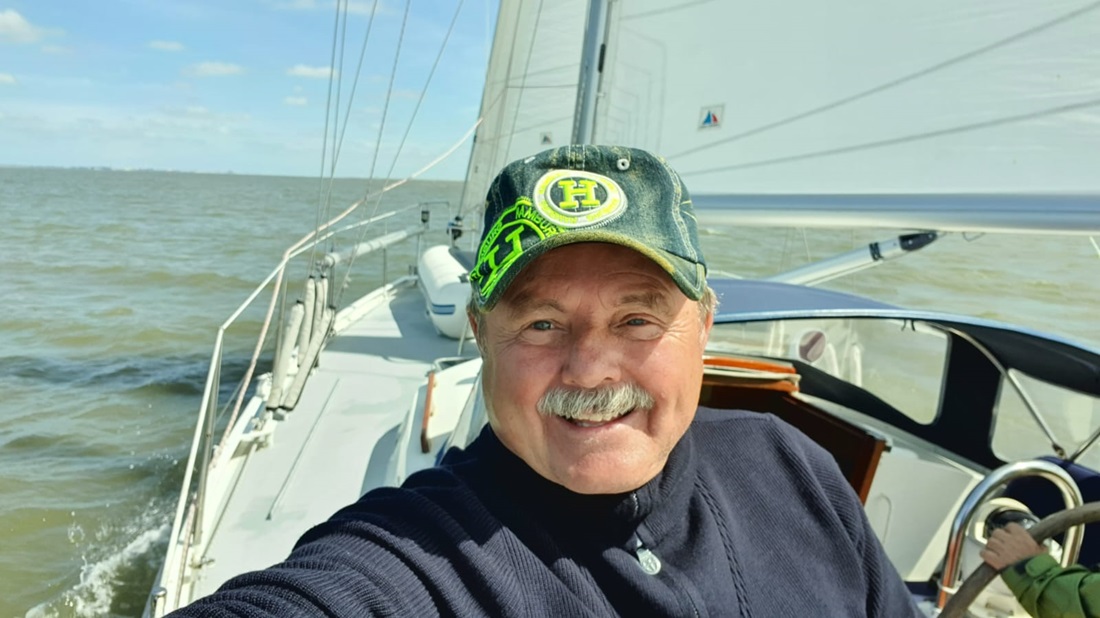
On the ocean waves: Egger in his sailing boat
Images: FAI archives/Michael Egger

